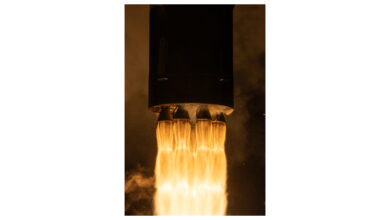Global Pigeon Pea Market (2021 to 2026) – Industry Trends, Share, Size, Growth, Opportunity and Forecasts – ResearchAndMarkets.com

DUBLIN–(BUSINESS WIRE)–The “Pigeon Pea Market: Global Industry Trends, Share, Size, Growth, Opportunity and Forecast 2021-2026” report has been added to ResearchAndMarkets.com’s offering.
According to this report the global pigeon peas market reached a volume of 11.6 Million Tons in 2020. Looking forward, the global pigeon pea market is expected to exhibit strong growth during the next five years.
A tropical plant of the pea family, pigeon peas are generally grown as a food crop. They have a high nutritional value which makes them an ideal supplement to the diets that are protein-deficient. They not only offer nutritional benefits but also help to tackle health related issues such as cough, acidity, stomach pain, poisoning, piles and swelling of internal organs. Widely used in animal feed, fuel wood, rearing lac insects, green manuring, soil conservation and windbreaks, pigeon peas have now become an extremely important crop as they are cultivated in virtually every tropical country of the world. Furthermore, the perennial nature of pigeon peas allows farmers to take multiple harvests. The resulting surplus can be traded in both local and international markets. Factors such as population growth, improving living standards and growing health awareness among the consumers are currently influencing the demand for pigeon peas in the global market.
The report has segmented the market on the basis of major geographies. Currently, India represents the largest producer of pigeon peas accounting for around 70% of the total global production. India is followed by Myanmar, Malawi, Kenya and Tanzania. The report has also analysed the top exporting and importing countries in the global pigeon pea market. Myanmar represents the biggest exporter of pigeon peas accounting for nearly 90% of the total global export volumes. Myanmar is followed by Tanzania, Sudan, Kenya, France, Ecuador, Sri Lanka, Peru, India and Malawi. Among the top importing countries, India represents the biggest importer of pigeon peas accounting for more than 95% of the total global import volumes. India is followed by Zimbabwe, the United States, Peru, United Kingdom, Malaysia, Australia, Sri Lanka, Nepal and Canada.
The report also provides a comprehensive analysis for setting up a pigeon peas processing plant. The study covers all the requisite aspects of the pigeon pea industry and provides an in-depth analysis of the market, industry performance, processing and manufacturing requirements, project cost, project funding, project economics, expected returns on investment, profit margins, etc. This report is a must-read for entrepreneurs, investors, researchers, consultants, business strategists, and all those who are planning to foray into the pigeon peas industry in any manner.
Key Questions Answered in This Report:
- How has the global pigeon peas market performed so far and how will it perform in the coming years?
- What are the key regions in the global pigeon peas market?
- What has been the impact of COVID-19 on the global pigeon peas market?
- What are the price trends of pigeon peas?
- What are the various stages in the value chain of the pigeon peas industry?
- What are the key driving factors and challenges in the pigeon peas industry?
- What is the structure of the pigeon peas industry and who are the key players?
- What is the degree of competition in the pigeon peas industry?
- What are the profit margins in the pigeon peas industry?
- What are the key requirements for setting up a pigeon peas processing plant?
- How pigeon pea is processed?
- What are the various unit operations involved in a pigeon peas processing plant?
- What is the total size of land required for setting up a pigeon peas processing plant?
- What are the machinery requirements for setting up a pigeon peas processing plant?
- What are the raw material requirements for setting up a pigeon peas processing plant?
- What are the packaging requirements for pigeon peas?
- What are the transportation requirements for pigeon peas?
- What are the utility requirements for setting up a pigeon peas processing plant?
- What are the manpower requirements for setting up a pigeon peas processing plant?
- What are the infrastructure costs for setting up a pigeon peas processing plant?
- What are the capital costs for setting up a pigeon peas processing plant?
- What are the operating costs for setting up a pigeon peas processing plant?
- What will be the income and expenditures for a pigeon peas processing plant?
- What is the time required to break-even?
Key Topics Covered:
1 Preface
2 Scope and Methodology
3 Executive Summary
4 Introduction
5 Global Pigeon Peas Market
5.1 Market Overview
5.2 Market Performance
5.3 Impact of COVID-19
5.4 Price Analysis
5.5 Market Breakup by Region
5.6 Market Forecast
5.7 Imports and Exports
5.8 SWOT Analysis
5.9 Value Chain Analysis
5.10 Porter’s Five Forces Analysis
5.11 Key Market Drivers and Success Factors
6 Performance of Key Regions
7 Competitive Structure
8 Pigeon Pea Processing
9 Project Details, Requirements and Costs Involved
10 Loans and Financial Assistance
11 Project Economics
For more information about this report visit https://www.researchandmarkets.com/r/sc9db1
Contacts
ResearchAndMarkets.com
Laura Wood, Senior Press Manager
[email protected]
For E.S.T Office Hours Call 1-917-300-0470
For U.S./CAN Toll Free Call 1-800-526-8630
For GMT Office Hours Call +353-1-416-8900





